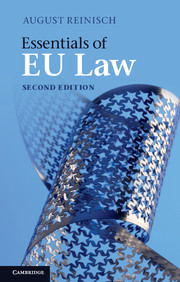Book contents
- Frontmatter
- Contents
- Preface
- Abbreviations
- 1 History of European integration
- 2 The institutional framework
- 3 The making of Union law
- 4 The effect of Union law
- 5 Judicial control within the Union
- 6 Protecting fundamental rights within the EU
- 7 The free movement of goods
- 8 The free movement of persons
- 9 EU competition law
- 10 Selected EU policies
- 11 The EU as an international actor
- Index
11 - The EU as an international actor
Published online by Cambridge University Press: 05 November 2012
- Frontmatter
- Contents
- Preface
- Abbreviations
- 1 History of European integration
- 2 The institutional framework
- 3 The making of Union law
- 4 The effect of Union law
- 5 Judicial control within the Union
- 6 Protecting fundamental rights within the EU
- 7 The free movement of goods
- 8 The free movement of persons
- 9 EU competition law
- 10 Selected EU policies
- 11 The EU as an international actor
- Index
Summary
One of the main achievements of the Lisbon Treaty, already envisaged in the 2004 Draft Constitution Treaty in its endeavour to simplify European law and, thus, to make it more accessible to EU citizens, is the abolition of the three pillar structure under a common EU roof. Instead, one single EU replaced the existing supranational Community (Article 1 TEU). This new European Union pursues both the supranational former Community policies as well as the inter-governmental areas of cooperation, such as the CFSP. With the entry into force of the Lisbon Treaty, one EU, endowed with legal personality in Article 47 TEU, is expressly empowered to enter into international agreements with third countries and international organisations (Article 37 TEU and Article 216 TFEU) and is the sole actor on the international plane. However, even though all external relations of the EU are now governed by common principles, the CFSP retained some of its distinct features and remains separated in the TEU, rather than the TFEU.
When dealing with the EU as an international actor, the analysis of its competence is always twofold. The first important question is, whether a competence for the Union to act externally exists at all. In a second step, it is crucial whether an existing competence is exclusive to the EU or shared with the Member States.
- Type
- Chapter
- Information
- Essentials of EU Law , pp. 238 - 264Publisher: Cambridge University PressPrint publication year: 2012



